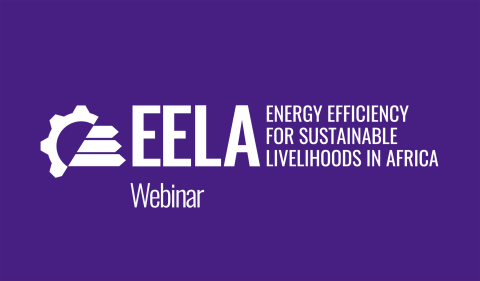WEBINAR
Webinar Series: Europe and Sweden’s Strategic Push for Industrial Energy Efficiency

The 13th EELA webinar explored EU and Swedish policy initiatives that help businesses cut energy use, reduce costs, and strengthen their competitiveness. Moderated by Readlay Makaliki, Technical Lead at SACREEE and member of the EELA team, the session featured Maja Lindh from the Swedish Energy Agency, who provided an in-depth look at Sweden’s policies and programmes designed to promote energy efficiency in the industrial sector.
Central to the Sweden’s approach is the Law of Energy Audits and Management Systems, a regulation rooted in the EU’s “Fit for 55” package. This directive mandates that companies with energy consumption above 2.8 GWh conduct regular energy audits, while those exceeding 23.6 GWh must implement the ISO 50001 energy management system. The law, enacted in 2014, not only aligns with EU climate goals, which aims for a 55% reduction in greenhouse gas emissions by 2030 compared to the levels of 1990, but also fosters a culture of continuous improvement in energy performance.
A key innovation introduced by the law is the certified energy auditor profession, which did not exist prior to its implementation. Companies are required to conduct audits every four years, performed by certified experts who undergo rigorous testing and maintain their credentials through regular practice. To ease the burden, audits can be staged over multiple years, a flexibility adopted by nearly half of the eligible companies.
The audit process itself is structured around identifying significant energy uses and developing actionable plans to improve efficiency. Companies are encouraged to delve deeper into prioritized areas during subsequent audits, ensuring a progressive refinement of their energy strategies. Results are reported to the Swedish Energy Agency, which conducts desk-based supervision and compiles national statistics.
Beyond regulation, Sweden has supported companies through The Energy Step programme, which offers two types of financial aid: project development support and investment support. The former covers up to 50% of costs related to implementing audit-identified measures or preparing investment decisions, while the latter funds up to 30% of additional costs required to achieve higher energy efficiency.
Several success stories were highlighted during the webinar:
- Scania CV AB received project development support for a new foundry that now operates with halved energy use, powered entirely by renewables and emitting zero greenhouse gases.
- Höganäs, a leading metal powder manufacturer, used investment support to upgrade its furnace system, cutting energy demand by 2.5 million kWh and reducing emissions by 350 tonnes annually.
- Volvo Powertrain AB transitioned to LED lighting in its production facilities, significantly shortening the payback period from 7–8 years to just 1–2 years, while also improving workplace safety.
Together, these examples show that industrial energy efficiency thrives where funding is accessible and regulations are clearly defined. As Lindh explained, simplified application processes and shorter payback periods often determine whether a project moves forward. The law has also opened new channels of dialogue with companies, making outreach and support more focused and effective.